Our very comfortable camp!
The view from our camp looking one way.
The view looking the other way!
Getting the shower set up!
We had a late start from Windhoek on 19th July, leaving around noon. It was a straightforward drive on the C28 gravel road, which is very scenic, but uneventful for birding. We arrived at Bloedkoppies (which means red koppie, as it looks red, as the sun goes down) late afternoon & found a wonderful camping site around the back end of the koppie, very secluded. After making camp we enjoyed a nice meal around the campfire.
Cape Turtle Dove
Red eyed Bulbul
Common in the wadi.
Mountain Chat
This individual is of the pied morph.
I think this is the first time I have seen this morph.
Pale winged Starling
A bit of a luxury this!
Female Cape Sparrow
The next morning we stayed in camp watching birds come to the water we had put out for them.
The area is a mixture of koppies
& gravel & sand plains
The tracks were OK in the main
with just a few tricky areas.
The Rock Arch
In the afternoon we went for a drive to Tankas & the Rock Arch area. The weather was great, being sunny & warm. Birds an animals were not plentiful but we saw some good species.
Sun downer time!
The view from half way up the koppie.
Another shit day in Africa!
Rock Hyrax
Looking down on our camp at dusk.
Sunset over the hills.
The view from half way up the koppie.
Another shit day in Africa!
Rock Hyrax
Looking down on our camp at dusk.
Sunset over the hills.
We arrived back in camp & climbed the koppie for a sun downer.
21st July we were up early & drove to the flat gravel plains looking for Gray's Lark. However, we didn't see any despite covering quite a distance on foot. It was a lovely morning & we saw quite a few Quiver Trees, which are quite uncommon.
Unfortunately, we had a gash in the tyre & had to fix it & this ruined the rest of our morning! Once we were mobile again we went to Kuseib Canyon, which was a long drive but worth it.
It was a lovely morning, in a great environment.
A brilliant landscape.
Quiver Tree.
Delana looking appreciative
of the landscape.
Looking up from the ground.
A brilliant landscape.
Quiver Tree.
Delana looking appreciative
of the landscape.
Looking up from the ground.
Trac Trac Chat
The only species were saw
on the walk!
21st July we were up early & drove to the flat gravel plains looking for Gray's Lark. However, we didn't see any despite covering quite a distance on foot. It was a lovely morning & we saw quite a few Quiver Trees, which are quite uncommon.
Not fixable! The price you pay for gravel roads
& off roading!
Unfortunately, we had a gash in the tyre & had to fix it & this ruined the rest of our morning! Once we were mobile again we went to Kuseib Canyon, which was a long drive but worth it.
Lappet faced Vulture
Trac Trac Chat
We finally found Grey's Lark!
We saw around 100 birds in small flocks
scattered over the gravel plains.
Giraffe!
Not any Giraffe, but genuine desert Giraffes!
Fantastic to see them!
Ruppell's Korhaan
Quite a few were seen on the drive back.
Gemsbokwater, not a lot of it!
Trac Trac Chat
We finally found Grey's Lark!
We saw around 100 birds in small flocks
scattered over the gravel plains.
Giraffe!
Not any Giraffe, but genuine desert Giraffes!
Fantastic to see them!
Ruppell's Korhaan
Quite a few were seen on the drive back.
Gemsbokwater, not a lot of it!
We then drove back via Gemsbokwater & birds & animals started to show themselves late in the afternoon.
On the return to camp we came across a dry river bed
with some good vegetation in it.
with some good vegetation in it.
Gemsbok
One of the iconic animals of this park.
Lappet faced & White backed Vulture
One of Namibia's near endemics.
Female African Grey Hornbill
Fiscal Shrike
Packing up camp.
Packing up camp.
We reluctantly packed up camp on 22nd July. It had been a great few days in this wonderful environment. Animals & birds were scarce but we saw some very sought after species.
Mammals:
Giraffe 4; Gemsbok 1; Springbok 45; Klipspringer 2; Southern Ground Squirrel 20; Suircat1.
Best birds:
Ostrich 20; Lappet faced Vulture 3; White backed Vulture 1; Greater Kestrel 2; Ruppell's Korhaan 17; African Grey Hornbill 2; Fawn coloured Lark 1; Grey's Lark 100; Sabota Lark 2; Karoo Long billed Lark 1; Long billed Pipit 1; Mountain Chat 10; Familiar Chat 2; White backed Mousebird 20.
It had been a fantastic few days in this great park. Now we headed for Swakopumund & a few nights in an apartment to get ourselves organised.
We headed to Swakopmund Saltworks on the morning of 23rd July. It was a cold grey day, poor for photography. But we enjoyed a walk around a large settlement pond with a few birds present.
Best birds:
350 Greater Flamingo; 45 Lesser Flamingo; 120 White breasted Cormorant; 200 Black necked Grebe; 300 Cape Teal; 35 Pied Avocet; 200 Chestnut banded Plover.
We then drove up the coastal road to Cape Cross Seal Sanctuary. It was a desolate drive, but we arrived at the site & it was an unusual place!
Swakopmund Saltworks
It was a cold, grey winters day!
White breasted Cormorant
Greater Flamingo
Kelp Gull
Cape Teal, Pied Avocet & Black winged Stilt.
Chestnut banded Plover
Many birds with chicks
This chick was alone on the road.
This chick was reunited with its parent
& is underneath this bird.
Many birds with chicks
This chick was alone on the road.
This chick was reunited with its parent
& is underneath this bird.
We headed to Swakopmund Saltworks on the morning of 23rd July. It was a cold grey day, poor for photography. But we enjoyed a walk around a large settlement pond with a few birds present.
Best birds:
350 Greater Flamingo; 45 Lesser Flamingo; 120 White breasted Cormorant; 200 Black necked Grebe; 300 Cape Teal; 35 Pied Avocet; 200 Chestnut banded Plover.
The sea is full of Cape Fur Seals.
Hundreds of Cape Fur Seal female & pups
along the coast.
This is the off-season!
All the males are at sea, they only come offshore
for three months of the year.
This is the boardwalk where you are
supposed to walk!
This is the off-season!
All the males are at sea, they only come offshore
for three months of the year.
This is the boardwalk where you are
supposed to walk!
Completely unafraid of human presence.
Remains of the old slaughtering station.
These slightly larger pups are gaining
independence & move closer to the ocean.
Black backed Jackals patrol the colony
looks for food.
Kelp Gulls are also looking for scraps.
White fronted Plover.
These slightly larger pups are gaining
independence & move closer to the ocean.
Black backed Jackals patrol the colony
looks for food.
Not all jackals were doing well.
This one was very thin & sick.
Kelp Gulls are also looking for scraps.
White fronted Plover.
We then drove up the coastal road to Cape Cross Seal Sanctuary. It was a desolate drive, but we arrived at the site & it was an unusual place!
Just to the north of the fur seal colony
there is a nice bay.
It is a nice spot & a great place to stay
for a couple of nights.
The very pleasant lodge.
We enjoyed a good lunch here & it looked
a nice place to stay.
On the way back to Swakomund we called in
at a wreck along the coast.
White breasted Cormorants nesting.
White breasted Cormorant
We called in at Windpomp 14
for a late afternoon drink.
I quite like this quirky bar & it is right on the beach.
for a late afternoon drink.
I quite like this quirky bar & it is right on the beach.
Rooibank
The habitat for Dune Lark!
What you have to do to see this species!
Dune Lark!
It took a bit of finding.
Female Grey backed Finch-Lark
This is what you have to do in this habitat!
Success! We nailed it!
Lesser Flamingos
c.2,000 birds present here.
Cape Teal
The habitat for Dune Lark!
What you have to do to see this species!
Dune Lark!
It took a bit of finding.
Female Grey backed Finch-Lark
This is what you have to do in this habitat!
Success! We nailed it!
Lesser Flamingos
c.2,000 birds present here.
Cape Teal
We then called in for a short while to a wetland just behind a shopping mall in Walvis Bay. It was full of flamingos, c200 Lesser Flamingos present.
Lesser Flamingos along the esplanade
in Walvis Bay.
Birding was challenging in the wind. And considering the time of year when most waders are absent it was excellent.
2,500 Greater Flamingo; 15,000 Lesser Flamingo; 1,000 Cape Teal; 700 Pied Avocet; 1 Greenshank; 35 Curlew sandpiper; 600 Chestnut banded Plover; 25 caspian Tern; 40 Swift Tern & 35 Sandwich Tern.










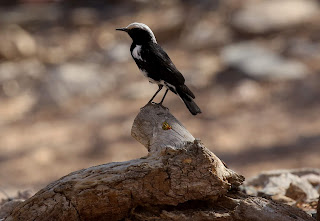






















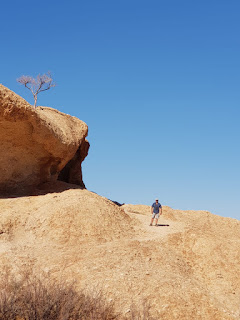


















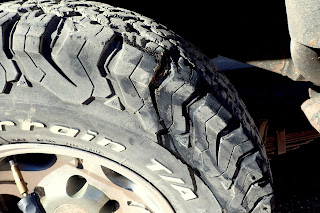





















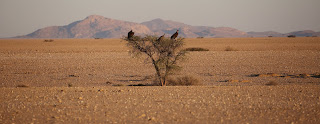

















































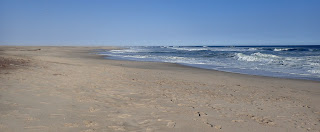

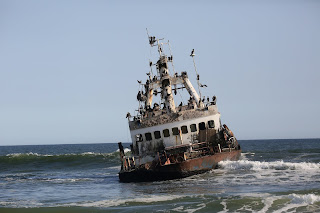



































No comments:
Post a Comment